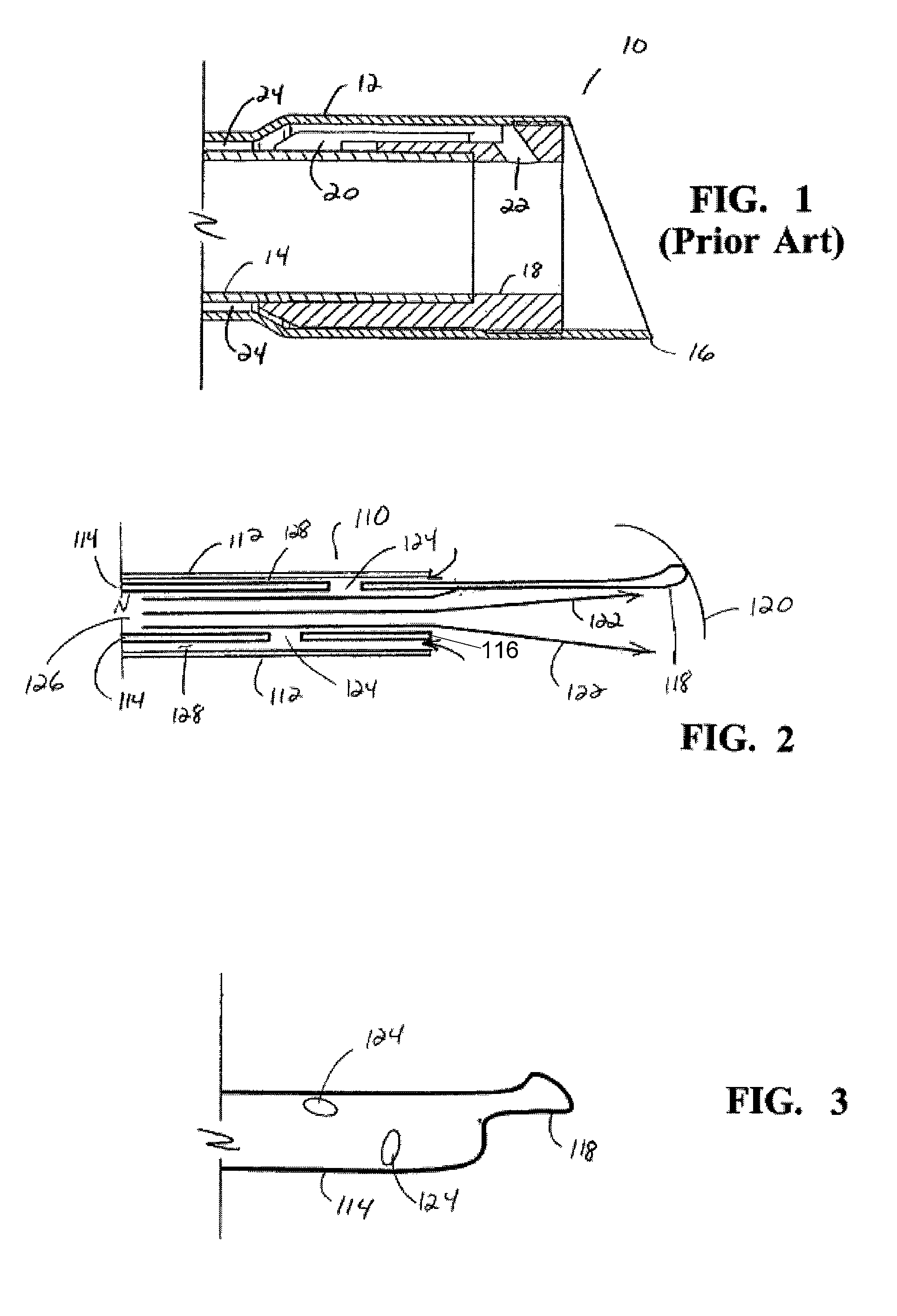Liquefaction handpiece tip
a handpiece and liquefaction technology, applied in the field of cataract surgery, can solve the problems of deteriorating vision, adding unnecessary complexity to the handpiece, and difficult temperature control of the heated solution,
- Summary
- Abstract
- Description
- Claims
- Application Information
AI Technical Summary
Benefits of technology
Problems solved by technology
Method used
Image
Examples
Embodiment Construction
As best seen in FIG. 1, prior art liquefaction tip 10 generally consists of outer tube 12 surrounding and coaxial with inner tube 14. Distal tip 16 of outer tube 12 is flared or belled so as to allow nozzle 18 to be inserted between outer tube 12 and inner tube 14. Nozzle 18 contains fluid channel 20 that communicates with orifice 22. Nozzle 18 seals annular gap 24 between outer tube 12 and inner tube 14. Pressurized fluid flowing down annular gap 24 is forced into fluid channel 20, out orifice 22 and against inner tube 14 near distal tip 16. Such a construction prevents pressurized fluid from directly entering the eye, however, due to the straight configuration and angle of distal tip 16, lens material is restricted from entering outer tube 12 and being directly exposed to the fluid jet exiting orifice 22.
As best seen in FIG. 2, tip 110 of the present invention generally includes outer tube 112 surrounding and coaxial with inner tube 114. Distal tip 116 of inner tube 114 contains a...
PUM
 Login to View More
Login to View More Abstract
Description
Claims
Application Information
 Login to View More
Login to View More - R&D
- Intellectual Property
- Life Sciences
- Materials
- Tech Scout
- Unparalleled Data Quality
- Higher Quality Content
- 60% Fewer Hallucinations
Browse by: Latest US Patents, China's latest patents, Technical Efficacy Thesaurus, Application Domain, Technology Topic, Popular Technical Reports.
© 2025 PatSnap. All rights reserved.Legal|Privacy policy|Modern Slavery Act Transparency Statement|Sitemap|About US| Contact US: help@patsnap.com


